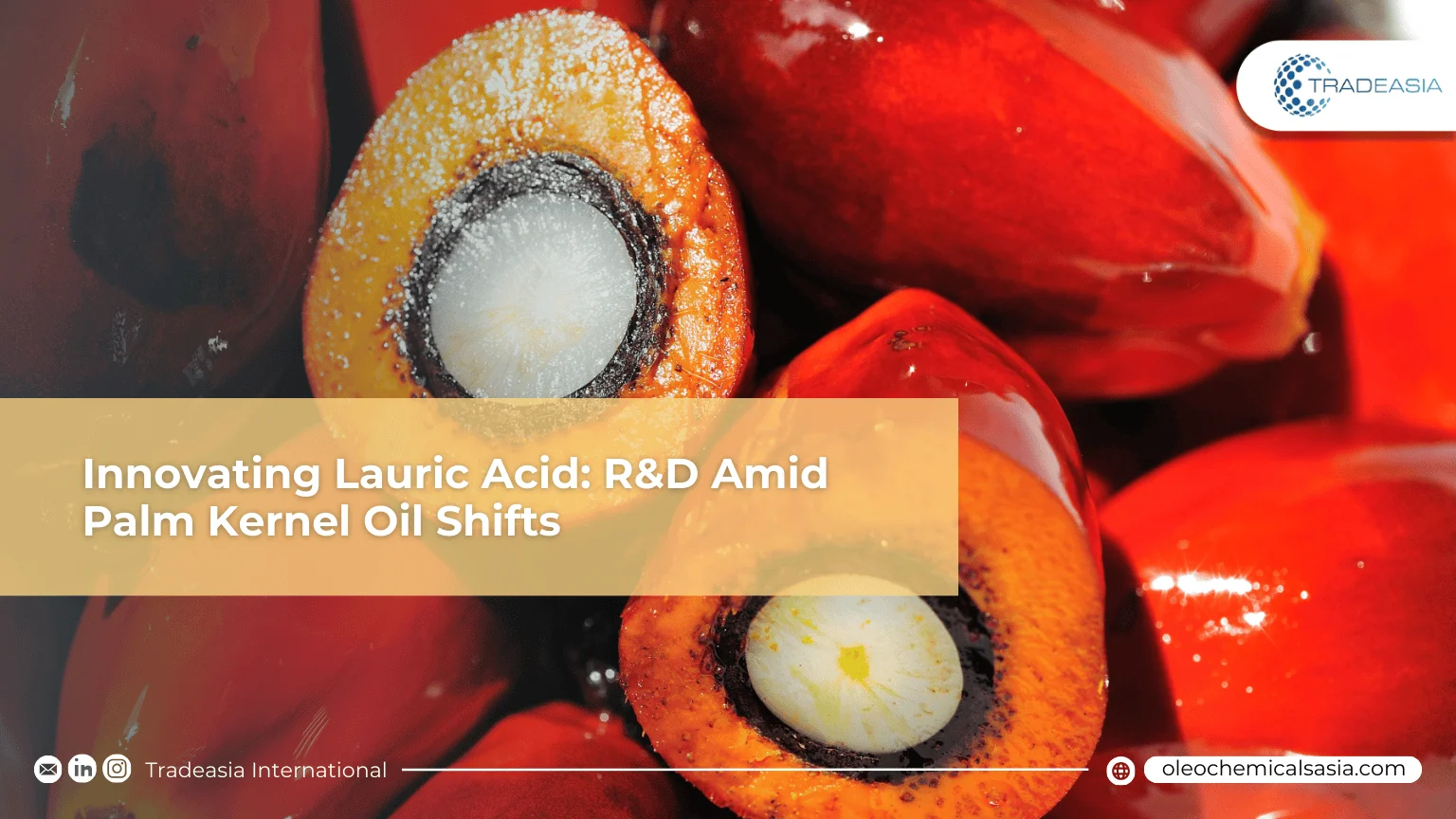A Market Adjusting to Volatility and New Opportunities
In the second quarter of 2025, the palm kernel oil (PKO) market saw a notable decline, creating both challenges and opportunities for the oleochemical sector. Prices in North America fell 7.8% to around USD 1,695 per metric ton, while in China they dropped even further by 13% to USD 1,551 per metric ton. As PKO is a core feedstock for lauric acid production, such price shifts inevitably influence supply chain dynamics and production costs. Instead of slowing progress, however, these changes have pushed companies to look for new ways to safeguard efficiency and competitiveness through advanced research and development.
At the same time, the lauric acid market itself is entering a rapid growth phase. Valued at USD 240.8 million in 2025, it is projected to reach USD 846.7 million by 2035, expanding at a CAGR of 13.4%. This acceleration is fueled by surging demand in industries such as personal care, food emulsifiers, and biodegradable materials—sectors increasingly aligned with global trends toward sustainability and renewable sourcing. This combination of rising demand and fluctuating raw material prices makes the case for innovation stronger than ever.
"In markets shaped by volatility, stability often comes from partnerships and sourcing reliability. Tradeasia International, with its strong foothold in palm and oleochemical distribution, continues to provide businesses with access to the raw materials they need, even during uncertain times."
R&D as the Catalyst for Supply Chain Resilience
The recent wave of R&D investment is now reshaping how lauric acid is produced. Companies are adopting enzymatic hydrolysis using lipase catalysts, as well as sophisticated catalytic processes, to improve efficiency and reduce waste. These innovations have boosted lauric acid yields by 8–10% per batch, cutting costs while also minimizing energy use. By stabilizing outputs and lowering dependence on volatile feedstock markets, producers are positioning themselves to weather price fluctuations more effectively.
The impact goes beyond production economics. With better processes, companies are strengthening supply chain resilience at a time when downstream industries—ranging from cosmetics to green materials—are demanding more reliable inputs. As industry sources such as Oleochemicals Asia emphasize, adopting these technologies is not just about maintaining margins; it is about ensuring competitiveness in a market that is set to expand significantly over the next decade.
In essence, the recent drop in PKO prices has accelerated innovation rather than slowed it. With lauric acid demand rising and R&D delivering measurable efficiency gains, the sector is entering a new chapter—one where resilience, sustainability, and smarter processes define long-term growth.
Sources:
-
Palm Kernel Oil Price Trend and Forecast (North America and China data) - https://www.openpr.com/news/4169755/palm-kernel-oil-price-trend-update-real-time-prices
-
Lauric Acid Market Projections and R&D Impact - https://www.futuremarketinsights.com/reports/lauric-acid-market
-
R&D Innovations in Lauric Acid Production (Enzymatic Hydrolysis and Catalytic Processes) - https://www.sciencedirect.com/science/article/pii/S2215017X19301389

Leave a Comment